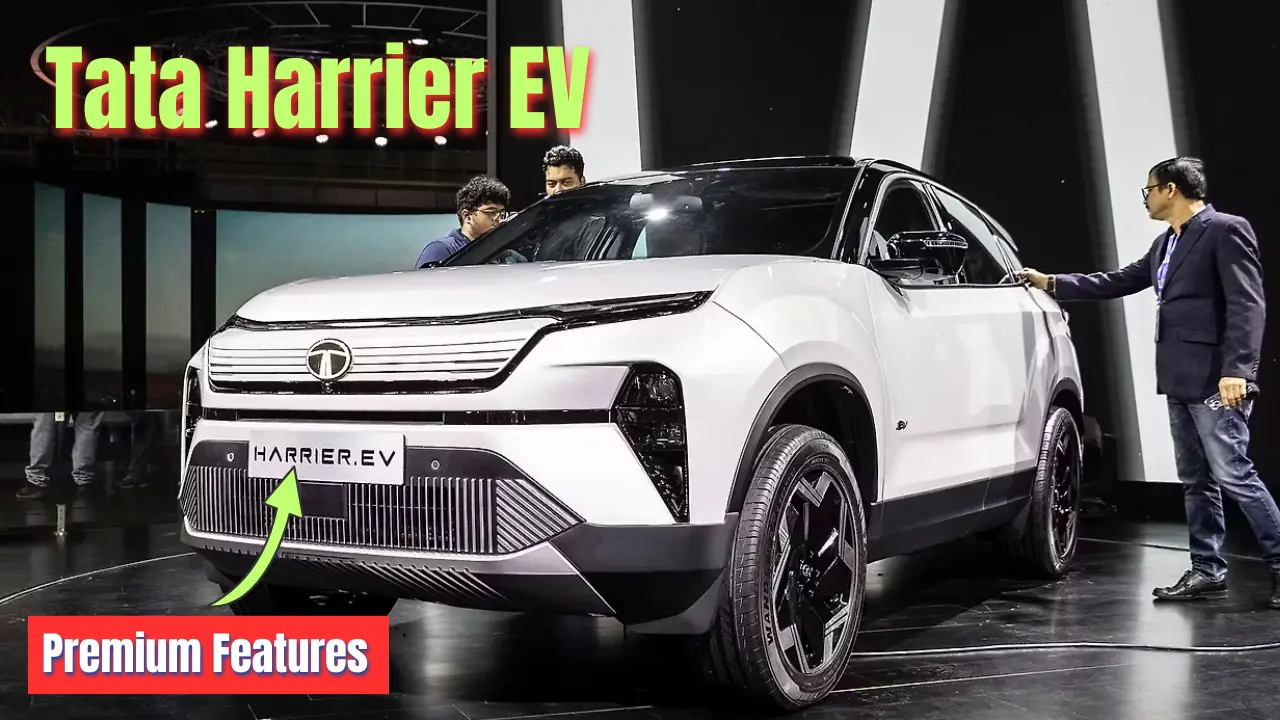Tata Harrier EV: After months of teasers and spy shots doing the rounds on social media, Tata Motors is finally ready to pull the covers off its flagship electric SUV. The Harrier EV launches in India tomorrow, June 3, 2025—and honestly, it’s about time.
The Wait is Almost Over (Thank God!)
Look, let’s cut to the chase—the Harrier EV has been one of those launches that’s had everyone from auto journalists to your neighborhood mechanic uncle talking. Ever since Tata showcased it at the Bharat Mobility Global Expo earlier this year, we’ve all been playing the waiting game. And trust me, the anticipation has been real.
This isn’t just another electric SUV being thrown into the market. It’s Tata’s big swing at premium rivals like the Mahindra XEV 9e and BYD Atto 3. You know, the kind of cars that make you think twice before dismissing electric vehicles as “just city runabouts.”
The timing’s pretty clever too. While May was all about mass-market stuff—the Kia Carens Clavis, facelifted Tata Altroz, and whatnot—June seems to be when the big boys come out to play.
What Makes the Harrier EV Actually Special
Here’s where things get interesting. Built on Tata’s shiny new acti.ev+ platform (which, by the way, comes from the same DNA as Land Rover’s D8 architecture), this isn’t just a regular Harrier with batteries shoved wherever they’d fit. It’s been designed from the ground up as an electric SUV.
The number everyone’s been waiting for? A real-world range of around 500 km on a single charge. Now that’s what I call a proper road trip machine, not just something for your daily office commute.
But here’s the kicker—and this is where Tata’s really thrown down the gauntlet—the Harrier EV will be their first electric SUV with an all-wheel-drive system. They’re calling it Quad Wheel Drive (QWD), which sounds fancy but basically means dual motors pumping out 500 Nm of torque. Tata even had the confidence to release a teaser showing this thing trying to climb a mountain. Bold move, that.
Read Also: Mahindra Bolero Bold Edition Launched: ₹10.02 Lakh Price, 2026 EV Plans Revealed
Design That Doesn’t Try Too Hard
If you’re expecting some radical, spaceship-looking design, well… you might want to adjust those expectations. The Harrier EV pretty much sticks to the same recipe as its petrol sibling. And you know what? That’s not necessarily a bad thing. The regular Harrier still turns heads, so why mess with a good thing?
The EV touches are there, but they’re not screaming for attention. You get a sealed-off front grille (because, duh, no engine to cool), some redesigned bumpers, fancy aero wheels, and those little ‘EV’ badges that let everyone know you’re part of the electric club. There’s also this full-width LED strip connecting the headlights, which does make it look more… well, 2025-ish.
Tech That Actually Makes Sense
Step inside, and you won’t feel like you’ve entered some alien spacecraft. The Harrier EV keeps things familiar but smart. There’s a 12.3-inch infotainment screen, a 10.25-inch digital cluster, and a 10-speaker JBL setup that’ll make your favorite playlist sound pretty sweet.
All the usual suspects are there too—panoramic sunroof (because Indians love their sunroofs), ventilated seats for those scorching summer days, and dual-zone AC so you and your co-pilot can have your temperature wars in peace.
But the real party tricks? Vehicle-to-load (V2L) and vehicle-to-vehicle (V2V) charging. Imagine powering your entire camping setup or even giving a friend’s dead EV some juice using your Harrier. Now that’s the kind of tech that actually solves real problems.
Safety-wise, they haven’t cut corners either. Seven airbags, 360-degree cameras (because parking in Indian cities is an extreme sport), and Level-2 ADAS to keep you out of trouble.
The Million-Dollar Question: Price
Alright, let’s talk money. Word on the street is that the Harrier EV will land somewhere between Rs 24-30 lakh (ex-showroom). That puts it right in the ring with the Mahindra XUV 9e (Rs 21.90-30.50 lakh) and BYD Atto 3 (Rs 24.99-33.99 lakh).
At that price point, it better deliver. The good news? From what we’ve seen so far, it seems to tick the right boxes—premium feel, actual capability, and a range that won’t have you planning your life around charging stations.
Why This Launch Actually Matters
The Harrier EV isn’t just another model launch for Tata. These guys have already sold over 200,000 electric vehicles since the Nexon EV kicked things off in 2020. They’ve basically owned the Indian EV space, but mostly in the affordable segment.
The Harrier EV, along with that retro-cool Sierra EV that’s coming, shows Tata’s ready to play in the premium league. And with their plan to get 400,000 charging points across India by 2027 (through that Open Collaboration 2.0 thing), the infrastructure’s finally starting to catch up.
Tomorrow’s launch will put an end to all the speculation, spy shots, and “my friend’s cousin works at Tata and he says…” stories. Will the Harrier EV live up to all this hype? Based on everything we know, it’s looking pretty damn promising.
